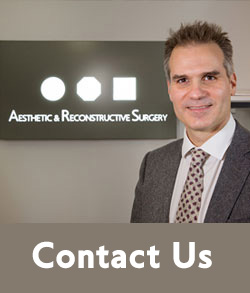What are scars and how are they treated
When we talk about a scar, we refer to the mark that remains after healing of a wound or injury of any cause. Anywhere there is disruption of skin continuity, a scar can form. What differs is its quality and how visible it is after healing. Poor healing can result in a pronounced, unattractive scar.
The final appearance of a scar is influenced by many factors, such as its texture and composition, its size, shape, location, and whether the scar is raised (hypertrophic) or depressed (atrophic).
Treating a scar depends on all these aspects. Not all scars are treated in the same way. Some basic scar categories include:
– Dysmorphic (irregular) scars: scars that leave a distorted mark after healing (after at least one year) often due to inflammation, infection, individual predisposition, or poor surgical technique
– Hypertrophic scars: raised scars that remain within the boundaries of the original wound
– Keloids: scars that extend beyond the original wound boundaries, with the body continuing to produce collagen after healing is complete. Because of their nature, keloids often require a combined treatment approach (surgical removal + corticosteroid injections, silicone sheets for pressure, or fractional laser)
– Contracture (restrictive) scars: typically occur over joints or areas of movement (elbows, neck, knees, etc.). They may cause significant contraction that limits joint movement, especially common after burns
Some scars are treated surgically for better cosmetic results, while others are addressed using combined methods (e.g. injections, lasers, pressure therapy). For example:
– A dysmorphic scar may be surgically removed and reclosed under tension control
– A keloid may be partially excised and followed by injections of corticosteroids
– Large or contracture scars may need special techniques such as Z‑plasty or W‑plasty
Dr. Karmiris will evaluate your scar and propose the most appropriate treatment.
Want to know more ?
Contact the doctor
Preoperative / Before surgery
Before the procedure, special tests are generally not needed — unless you have bleeding disorders or the surgery will require general anesthesia.
It is beneficial to stop smoking before surgery and immediately afterward, as smoking increases the risk of poor wound healing. Also avoid using aspirin and anti‑inflammatory medications, since they increase bleeding risk.
The procedure
Scar removal or revision is usually done under local anesthesia in a clinic setting. Depending on the objectives:
– A dysmorphic scar may be fully excised and re‑sutured without tension
– A keloid may be partially removed and followed by corticosteroid injection
– Large or contracture scars may be revised using specialized techniques like Z‑plasty or W‑plasty
After scar removal or modification, closure is performed in layers and the wound is dressed. Sutures are removed in 7–14 days, depending on location.
Postoperative
After the procedure, the patient can return home. A dressing will be applied according to the site of surgery. Dr. Karmiris will give you instructions on care, follow-up visits, and when sutures should be removed (typically 7 days for face, 14 days for torso).
Risks and safety information
Complications are relatively rare. Bleeding (hematoma) and infection are possible complications — in general rates of ~1–2%. There is also possibility of poor scar healing or recurrence.
Want to know more ?
Contact the doctor
Skin Surgery




